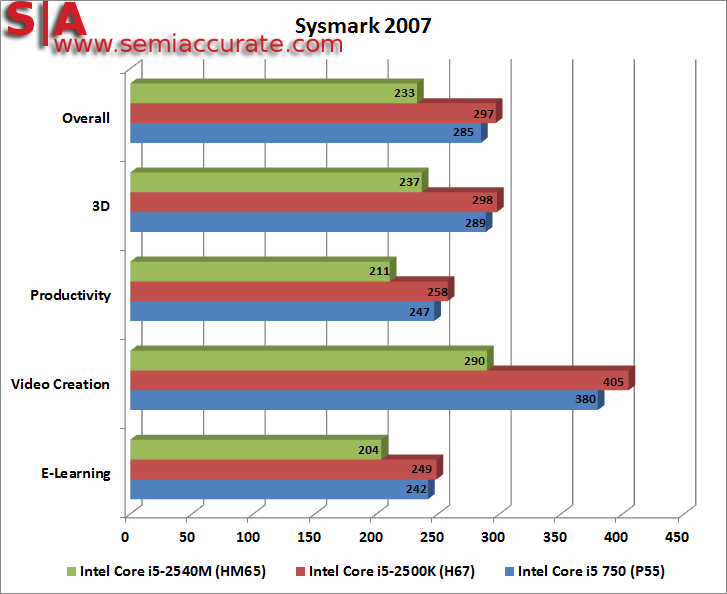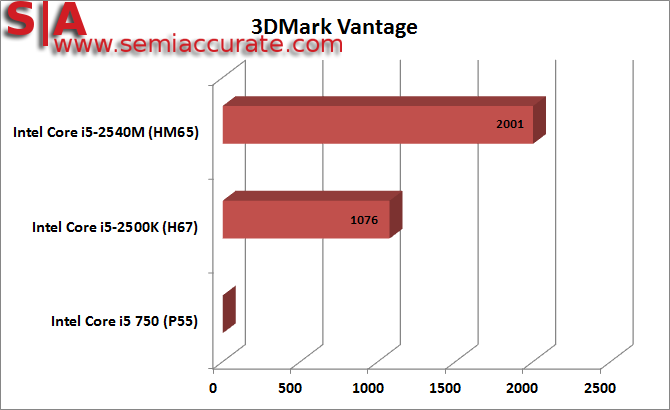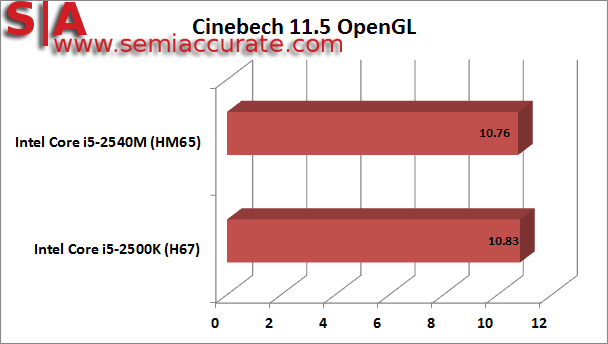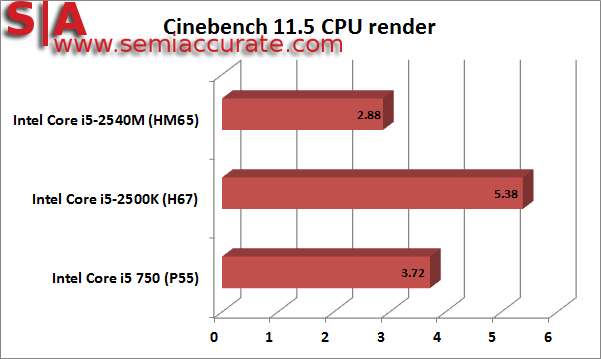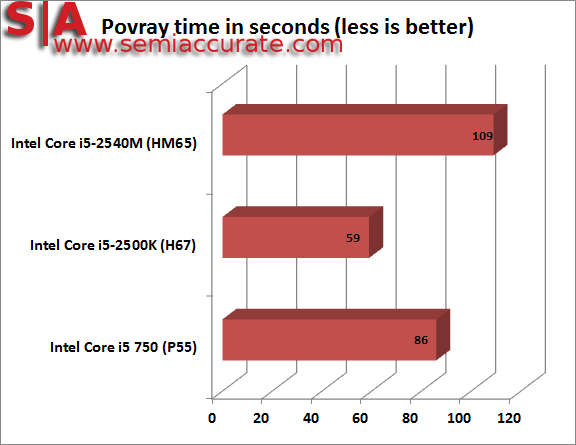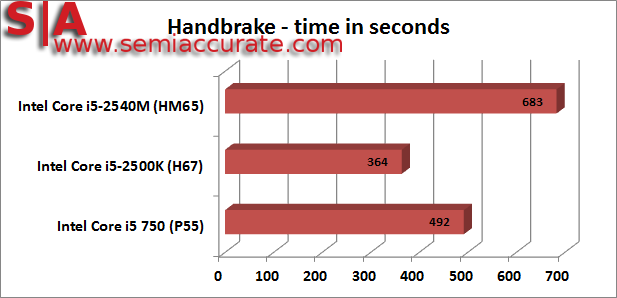Now for some productivity scores and things are looking up. The review notebook came pre-configured with 4GB of DDR3 1333MHz RAM so it should be noted that this is half the RAM that we used to test the desktop systems with, although we did use the same Intel X25-M SSD to level the playing field as much as we could. In Sysmark 2007 the overall score was came out at 233 which is pretty decent compared to Intel’s desktop Core i5-2500K which scored 297 pair with the H67 chipset. Not quite quad core desktop performance, but it would be interesting to see how it would compare against a dual core desktop CPU.
In 3DMark Vantage the Core i5-2540M scores a surprise win with an overall score of P2001 which is almost 300 points faster than the 2500K at stock clocks. This is most likely directly related to the 200MHz faster graphics clock speed when it goes into turbo mode, but we can’t remember when we last saw a notebook that offered better integrated graphics than its desktop equivalent.
In Cinebench 11.5 things aren’t quite as impressive, although the OpenGL score of 10.76 is very close to that of 10.83 for the 2500K and almost within the margin of error. The dual core CPU is of course suffering here and only manages 2.88 points compared to 5.38 for the 2500K. However, it’s not that far behind an old Core i5 750 CPU at 2.66GHz which scores 3.72 and that’s with two additional cores, albeit no Hyper Threading as per the mobile CPU.
Things are similar in Povray where the Core i5-2410M takes 109 seconds to render the test image while the 2500K does it 59 seconds and the Core i5 750 ends up somewhere between at 86 seconds.
Moving on to video transcoding and you quickly realise that relying on two cores is far from ideal as the Handbrake test took 11 minutes and 23 seconds, that’s 3 minutes and 11 seconds longer than it too for the Core i5 750 to perform the same task at stock clock.
Things improved when we moved to Arcsoft’s MediaConverter 7 which reduced the time it took to transcode the same video to 4 minutes and 2 seconds using the CPU, but that’s still a minute and four seconds slower than the Core i5 750. However, enabling Intel’s Quick Sync and we’re down to 74 seconds, once again beating the Core i5 2500K, albeit only by nine seconds.
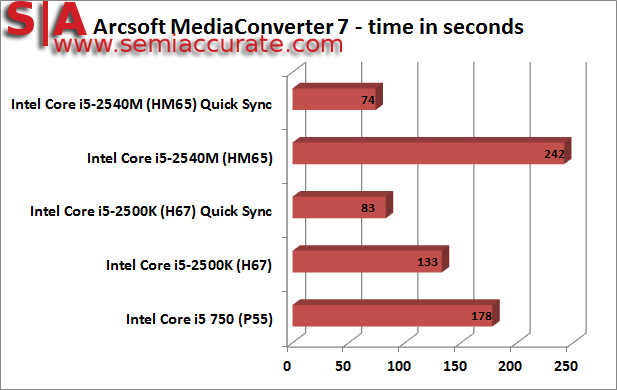
It’s hard not being impressed by a notebook CPU that comes that close to a desktop CPU with two extra cores. The fact that the Core i5-2540M can Turbo Boost all the way to 3.1GHz while still using both cores might have something to do with it. The fact that this CPU has half the cache memory or less compared to the two desktop chips doesn’t seem to hold it back much either. If this is what Intel’s new mobile dual core CPUs can do, then we’d like to see how the quad cores compare as we’d imagine that they would be pretty close to desktop performance.
In as much as we weren’t overly impressed by the notebook we were sent by Intel, we have to say that the mobile Sandy Bridge processors impress even more than the desktop counterparts. It’s also indicating that it’s now possible to move away from a desktop if you don’t need the extra power a desktop graphics card can offer, or the other expandability options you only get with a desktop PC. It’s been a long time coming, but it seems like we’ve almost arrived at what’s been hailed as the critical point where desktops and laptops offer the same performance for most users.S|A
Lars-Göran Nilsson
Latest posts by Lars-Göran Nilsson (see all)
- AMD and Nvidia set to take on LucidLogix Virtu - Apr 7, 2011
- Notebooks and hard drives to increase in price - Apr 6, 2011
- Motherboard makers craving affordable USB 3.0 solutions - Apr 6, 2011
- IEEE approves the IEEE 802.16m standard - Apr 1, 2011
- LucidLogix scores Intel as first Virtu customer - Apr 1, 2011
